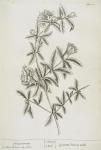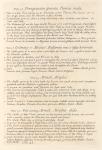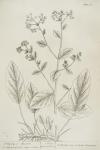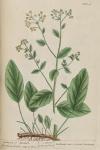

 97. Pomgranates. Granata, Punica mala.
97. Pomgranates. Granata, Punica mala.
Also see #145, Pomgranates.
1. This is a low Tree, having on its Branches, a few Thorns; The Leaves are a fine Grass Green, and the Flowers a fine Scarlet.
2. Pomgranates grow in Spain & Italy and many other Countries, and flowers in June and July.
3. The Balustia. off. are the large double Flowers of ye wild Pomgranate, which differs not in its manner of Growth from the other; These, as well as the single Flowers, and the Bark are very drying & restringent, good for all sorts of Fluxes, hemorrhagies, Bleedings. They strengthen the Gums, fasten loose Teeth, help the falling down of the Uoula, and cancerous Ulcers in the Mouth and Throat.
4. Greek, Ροια. Latin, Granata. Spanish, Granadas. Italian, Melagrano, or Pomo granato. French, Pomes de Grenades, or Mygrains. German, Granatopffelbaum. Dutch, Granaat Boom.

 98. Costmary or Alecoast. Balsamita mas. or Costus hortorum.
98. Costmary or Alecoast. Balsamita mas. or Costus hortorum.
Also see #098. Costmary - 192. Featherfew
1. The Stalks grow to be more than a foot high, the Leaves are a yellow Green, and the Flowers yellow.
2. It is planted in Gardens and Flowers in July.
3. The Leaves are accounted good to strengthen the Stomach, & ease ye Head-Ach arising from the Disorders thereof - It expells Wind and prevents sour Belchings. - outwardly it is used in Fomentations to comfort and strengthen the Limbs.
4. Greek, . Latin, Costus hortorum. Spanish, . Italian, Menta Greca. French, Coch. German, Buser Frawen Munk. Dutch, Balsame.
1. The Stalks grow to be 3 foot high, the Leaves are a pale Green and sometimes purplish, and the Flowers a greenish yellow.
2. It grows in Gardens and flowers in June and July.
3. The Leaves are frequently boiled & eaten like Coleworts, with Salt Meats & in Sallads, and are esteem'd cooling, and moistning, rendring the Bordy soluble, and good for hot biliouse Constitutions. - They are used with other emollient Herbs in cooling Glisters.
4. Greek, Ατράφαξις. Latin, Atriplex - alba hortensis - pallide virens. Spanish, Armoles. Italian, Atriplice. French, Arroches. German, Molten. Dutch, Melde.

 100. Wild stinking Arrach. Atriplex olida.
100. Wild stinking Arrach. Atriplex olida.
1. The Stalks of this Plant spread on the Ground, and the Leaves are covered with a mealy Green; the Flowers are small and Green.
The whole Plant has a strong foetid fishy Smell.
2. It grows on Dunghills & Waste Places flowring for some Months in the Summer.
3. This Herb is peculiarly appropriated to ye female Sex, being aperative, deobstruent, usefull in uterine Disorders, good to promote the Menses, expell ye Afterbirth, help Childbed Purgations, appease ye Strangulations of ye Womb, take of histeric Fits. It is useually given in a Decoction. - There is a Syrup kept in ye Shops made with ye Juice of this Plant & Sugar.
4. Greek, Ατράφαξις αγρία. Latin, Atriplex olida-silvestris. Spanish, Armoles. Italian, Reppice salvatico. French, Arroches sauvages. German, Bild Molten. Dutch, Bild Melde.



